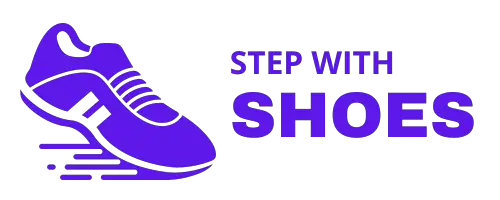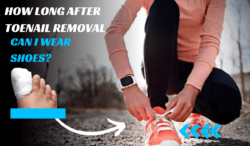After toenail removal, you can typically wear shoes within 1-2 days, depending on the healing process and your comfort level. However, it is important to choose open-toed or loose-fitting shoes to avoid friction and pressure on the affected area.
Wearing socks and using padding can also provide additional protection and cushioning. Remember to consult with your healthcare provider for specific post-operative instructions and any necessary adjustments to your footwear routine. Taking proper care and allowing sufficient healing time will ensure optimal recovery and minimize discomfort.
Factors Affecting The Healing Process
Impact Of The Nail Removal Method On Recovery Time
- The technique used for toenail removal plays a crucial role in determining the recovery time. Some common methods include:
- Partial nail avulsion: In this method, a portion of the nail is removed while leaving the remaining part intact. This typically has a shorter recovery time.
- Total nail avulsion: Here, the entire toenail is removed, which may result in a longer healing process.
- Chemical cauterization: The affected area is treated with chemicals to destroy the nail matrix, preventing further nail growth. This method may take longer to heal.
The Significance Of Proper Wound Care Post-Surgery
- Adequate wound care is essential for a speedy recovery after toenail removal. Here are some important aspects to consider:
- Keeping the area clean: Regularly wash the wound with mild soap and water to minimize the risk of infection.
- Applying antibiotic ointment: Using an antibiotic ointment can help prevent infection and promote healing.
- Dressing the wound: Cover the wound with sterile dressing to protect it from dirt and other contaminants.
- Moisturizing the surrounding skin: Apply a gentle moisturizer to maintain skin health and prevent dryness and cracking.
- Avoiding tight or ill-fitting footwear: Wearing loose-fitting shoes or open-toed sandals can help prevent undue pressure on the healing wound.
Role Of Individual Healing Capacity In Determining Recovery Time
- Every individual’s healing capacity varies, so the recovery time after toenail removal can differ from person to person. Factors impacting healing capacity include:
- Overall health: Chronic diseases or conditions may slow down the healing process, increasing recovery time.
- Immune system: A strong immune system can aid in faster healing.
- Age: Younger individuals usually heal more quickly compared to older adults.
- Lifestyle choices: Smoking, poor nutrition, and lack of sleep can impair the body’s ability to heal efficiently.
- Follow-up care: Adhering to post-surgical instructions, attending follow-up appointments, and seeking medical advice promptly can positively affect healing time.
Proper understanding of the factors influencing healing time after toenail removal is crucial for a smooth recovery. By considering the impact of the nail removal method, ensuring proper wound care, and acknowledging individual healing capacity, you can support your healing process and determine when it is safe to wear shoes again.
Recovery Time For Different Nail Removal Techniques
If you’ve recently undergone toenail removal, you might be wondering how long it will take before you can comfortably wear shoes again. The recovery time can vary depending on the technique used for nail removal. In this section, we will discuss the recovery timeline for three common nail removal techniques: partial nail avulsion, complete nail avulsion, and chemical nail avulsion.
Recovery Timeline For Partial Nail Avulsion:
- On the first day after the procedure, expect some discomfort and swelling.
- It is recommended to keep your foot elevated as much as possible to reduce swelling.
- Within a week, the initial discomfort should start to subside.
- By the end of the first week, you may be able to wear loose-fitting shoes or sandals.
- After about two weeks, most of the discomfort should be gone, and you should be able to wear regular shoes, although it’s advisable to choose ones that provide ample toe room.
Recovery Timeline For Complete Nail Avulsion:
- Similar to partial nail avulsion, the first day after the procedure may bring some discomfort and swelling.
- Elevating your foot and applying ice packs can help reduce swelling.
- Within a week, the initial discomfort should start to diminish.
- By the end of the first week, you may be able to wear loose-fitting shoes or open-toed sandals.
- Around two weeks after the procedure, most of the discomfort should have subsided, and you should be able to wear regular shoes comfortably.
Recovery Timeline For Chemical Nail Avulsion:
- After chemical nail avulsion, the recovery time is generally shorter compared to other techniques.
- Initially, you may experience some discomfort and swelling, but it should improve within a few days.
- You may be able to wear loose-fitting shoes or open-toed sandals within a week.
- By the end of the second week, most of the discomfort should have subsided, and you can typically wear regular shoes.
Remember that full recovery can vary for each individual, and it’s essential to follow your healthcare provider’s instructions for post-procedure care. Additionally, if you experience severe pain, excessive swelling, or any signs of infection during the recovery process, it’s crucial to reach out to your healthcare professional for guidance.
Tips For Faster Healing And Safe Shoe-Wearing
After toenail removal surgery, it is crucial to follow proper care instructions to promote faster healing and ensure safe shoe-wearing. Here are some tips to help you during the recovery process and beyond:
Appropriate Footwear Choices During The Healing Process:
- Opt for open-toe or sandals: To allow proper airflow and avoid any pressure on the wound, consider wearing open-toe shoes or sandals during the initial stages of healing.
- Choose wide shoes: Opt for shoes with a wider toe box to prevent any unnecessary friction or irritation on the recovering toe.
- Avoid high heels: While it may be tempting to wear your favorite high heels, it is best to avoid them for some time as they can exert pressure on the toe, hindering the healing process.
The Importance Of Keeping The Wound Clean And Dry:
- Proper cleaning routine: Follow the instructions provided by your healthcare professional regarding cleaning the wound. It is essential to keep the area clean to prevent infection.
- Avoid excessive moisture: Moisture can slow down the healing process and increase the risk of infection. Make sure to keep the wound dry and avoid activities that may cause excessive sweating.
- Protective coverings: Your healthcare provider may recommend using bandages or dressings to protect the wound from debris, dust, and bacteria. It is crucial to change these coverings regularly to maintain cleanliness.
Gradual Transition To Regular Shoes Post-Recovery:
- Listen to your body: Pay attention to any discomfort or pain while wearing shoes. If you experience any, it might be a sign that you need more time for a full recovery.
- Start with larger shoes: Once your toe has healed significantly, begin transitioning to regular shoes. Start with larger-sized shoes to allow your toe ample space and prevent any undue pressure.
- Take it slow: Gradually increase the duration of wearing regular shoes each day to allow your toe to adapt. Monitor any changes or discomfort and adjust accordingly.
Remember, every individual’s healing process may vary, so it’s essential to consult with your healthcare provider for specific instructions tailored to your situation. By following these tips, you can ensure a faster healing process and safely wear shoes post-toenail removal.
Dressing and Footwear Considerations
What to Wear Immediately After Toenail Removal
After toenail removal, you need to take special care of the surgical site. Here’s what you should consider:
- Your healthcare provider will typically apply a sterile dressing, like gauze or non-stick bandages, secured with medical tape.
- The dressing helps absorb drainage, keep the area clean, and prevent infection.
- Follow your doctor’s instructions regarding dressing changes and care.
- In some cases, you might be advised to leave the toe uncovered for a few days to allow air exposure for healing.
- Maintain hygiene and avoid exposing the toe to dirt, bacteria, or moisture.
Transitioning to Wearing Shoes
Transitioning to wearing shoes is a critical step in your recovery. Here’s what to keep in mind:
- The timing depends on the type of toenail removal and your individual healing progress.
- Partial toenail removal patients can often wear shoes within a few days to a week.
- Total toenail removal patients may require a longer healing period.
- Choose open-toed shoes, sandals, or soft sneakers to reduce pressure on the toe.
- Ensure the selected footwear doesn’t cause friction or compression.
- Gradually increase the time spent wearing shoes as comfort allows.
Suitable Footwear Choices During Recovery
Selecting the right footwear during recovery is essential. Consider the following:
- Opt for open-toed shoes, sandals, or roomy sneakers for better ventilation and reduced pressure.
- Avoid tight or narrow shoes, as they can squeeze the toe and lead to discomfort.
- Shoes with cushioned soles provide shock absorption and minimize impact on the treated area.
- For formal events, consider using toe protectors or gel caps to shield and reduce friction.
- Consult your healthcare provider for protective measures and suitable footwear recommendations.
Tips for Maintaining Hygiene
Maintaining good hygiene is crucial throughout your recovery. Here are some tips:
- Keep the treated to clean and dry to prevent infection.
- Gently wash the area with mild soap and warm water, avoiding harsh scrubbing or soaking.
- Pat it dry with a clean, soft towel.
- If recommended, apply antimicrobial ointment or dressing as directed.
- Change dressings regularly to ensure they remain clean and dry.
- Inspect the wound daily for signs of infection, such as increased redness, swelling, or abnormal discharge. If you notice concerning symptoms, contact your healthcare provider promptly.
Frequently Asked Questions For How Long After Toenail Removal Can I Wear Shoes
How Long After Toenail Removal Can I Wear Shoes?
After toenail removal, you can typically wear shoes once the wound has healed and there is no longer any pain or swelling. This usually takes about 1 to 2 weeks, but it can vary depending on the individual and the extent of the surgery.
It’s important to follow your doctor’s instructions for proper healing and care.
How soon can I wear shoes after toenail removal surgery?
After toenail removal surgery, the timing for wearing shoes depends on the type of procedure and individual healing progress. For partial toenail removal, you may be able to wear shoes within a few days to a week, while total toenail removal may require a longer healing period. Always follow your healthcare provider’s guidance.
Are there specific types of shoes I should avoid during recovery?
It’s advisable to avoid tight or narrow shoes during the recovery period, as they can put pressure on the treated area and cause discomfort. Instead, consider open-toed shoes, sandals, or roomy sneakers, as they can reduce pressure and promote healing.
Can I wear closed-toe shoes for formal events during recovery?
While you can wear closed-toe shoes for formal events, it’s recommended to use toe protectors or gel caps to shield the toe and reduce friction. This can make wearing closed-toe shoes more comfortable while protecting the surgical site.
How can I maintain proper hygiene after toenail removal?
*Maintaining proper hygiene is crucial for a successful recovery. Follow these steps:
- Gently wash the treated area with mild soap and warm water, avoiding vigorous scrubbing.
- Pat the area dry with a clean, soft towel.
- If your healthcare provider recommends it, apply antimicrobial ointment or dressing.
- Change dressings regularly to ensure they remain clean and dry.
- Perform daily inspections for signs of infection, such as increased redness, swelling, or unusual discharge.*
When should I seek medical attention if I experience problems after toenail removal?
If you notice signs of infection, persistent pain, or any concerning symptoms like unusual discharge, increased swelling, or redness, it’s crucial to contact your healthcare provider promptly. They can assess the situation and provide appropriate guidance.
Can I speed up the healing process to wear shoes sooner?
While you can’t significantly accelerate the healing process, you can support it by following your healthcare provider’s recommendations, maintaining good hygiene, and avoiding activities that may strain the treated area. Patience is key to a successful recovery.
What factors can influence the timing of wearing shoes after toenail removal?
Several factors, including the type of toenail removal, individual healing rates, the presence of complications or infections, and your healthcare provider’s recommendations, can affect when you can comfortably wear shoes again.
Conclusion
After toenail removal, it is important to give your feet time to heal before wearing shoes again. The length of time will vary depending on the individual and the type of toenail removal procedure. Generally, it is recommended to wait at least a few days before attempting to wear closed-toe shoes.
It is crucial to listen to your body and pay attention to any signs of discomfort or pain during this period. Once you feel ready, start by wearing loose-fitting shoes with enough room for your toes to breathe. Gradually, you can transition to regular shoes as your feet continue to heal.
Remember to keep your feet clean and dry, and follow any specific post-operative instructions given by your healthcare provider. By taking the necessary precautions and allowing your feet ample time to recover, you can get back to wearing shoes comfortably and confidently.


